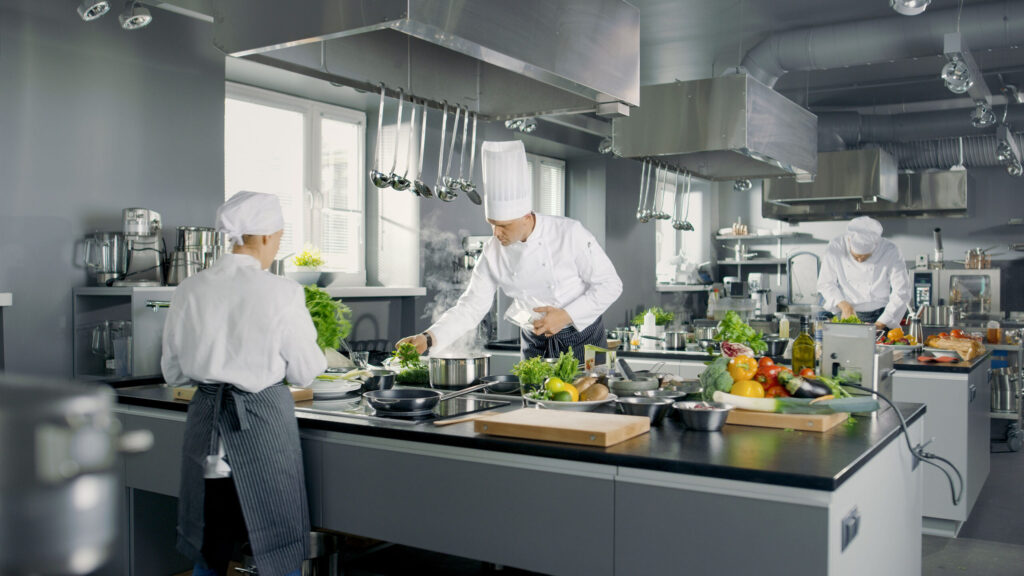Built to Last: How Stainless Steel Equipment Withstands the Rigors of a Commercial Kitchen
Stainless steel is durable and strong, making it an ideal material for heavy-duty equipment. It can withstand both high and low temperatures and is resistant to corrosion.
It’s also easy to clean. Kitchen staff can wet mop, pressure wash, or steam clean most types of stainless steel equipment. Just be sure to use non-abrasive tools and scrub in a direction that is parallel to the polish lines.
Stainless steel saucepans
Whether you’re whipping up some crepes or searing your favorite protein, stainless steel pans are a kitchen workhorse. Unlike enamel-coated cast iron and nonstick, they can withstand higher temperatures without warping or dulling the surface. However, this strength also means that stains may set in over time. This is called patina, and while it can look unsightly, it actually offers a kind of easy-release surface for your food. The good news is that it’s very simple to remove with a little scouring action (we recommend using a non-metal pad like the kind you get in an electric skillet) and a deglazing solution (such as vinegar or salt dissolved in water).
To keep your stainless steel pans looking their best, avoid scouring them with metal wool, which can leave streaks on the surface and scratch the material. Instead, make a paste of baking soda and water to scrub away stubborn stains.
When shopping for stainless steel pans, look for a fully-clad design. These are the most durable, with a layer of aluminum or copper sandwiched between layers of stainless steel. Cladding helps to correct the weaknesses of each metal, with aluminum acting as an excellent conductor and negating steel’s poor heat retention. All-Clad makes a highly regarded line of stainless steel pans in Canonsburg, Pennsylvania using this time-honored method.

Stainless steel stockpots
Stainless steel stockpots are essential kitchen equipment for preparing large quantities of soups, stews, stocks and other liquids. They have even heat distribution and are not reactive to acidic foods, making them the ideal choice for commercial food preparation. Unlike aluminum, which is an inexpensive option that can be damaged by acidic foods and is limited to certain types of cooking, stainless steel bep cong nghiep is a durable and long-lasting material that will stand up to the rigors of a busy restaurant environment. Stainless steel stock pots are also available with steaming baskets, which make it easy to prepare delicate foods like vegetables and seafood.
There are several different kinds of stainless steel stockpots on the market, including tri-ply pots that have an aluminum core surrounded by two outer layers of classic stainless steel. These pots are resistant to corrosion and can be used on induction cooktop surfaces. Other options include copper, which has excellent thermal conductivity but can react with certain foods and is not suitable for induction cooktops; and hard-anodized aluminum, which is harder than stainless steel and has a raised design that makes it less likely to stick.
Stainless steel utensils
Stainless steel is one of the most commonly used materials in kitchen equipment. It is easy to sanitize, durable and resists various acids found in foods. It can also be easily molded into the shape of pots, pans, dishware, flatware and utensils. It is also an eco-friendly option since it can be recycled repeatedly without losing its properties.
Generally, stainless steel is comprised of iron and chromium, with other elements like nickel, molybdenum, titanium, and copper added to increase strength and resistance to corrosion. The type of stainless steel used for cookware and flatware is usually classified as being in the 200, 300, or 400 series. The lower-grade 200 series has manganese in place of nickel, making it less expensive but prone to corrosion. The higher-grade 300 and 400 series have higher levels of chromium and nickel, reducing corrosion and improving durability and strength.
Stainless steel utensils are easy to handle and have an attractive appearance. They can withstand high and low temperatures. They are also dishwasher safe, making them a great choice for a family with young children or students who need to wash dishes frequently. The best way to clean a stainless steel utensil is by using warm water with soap or detergent. You should also use plastic, coir or sponge scrubbers to prevent scratches and pitting.